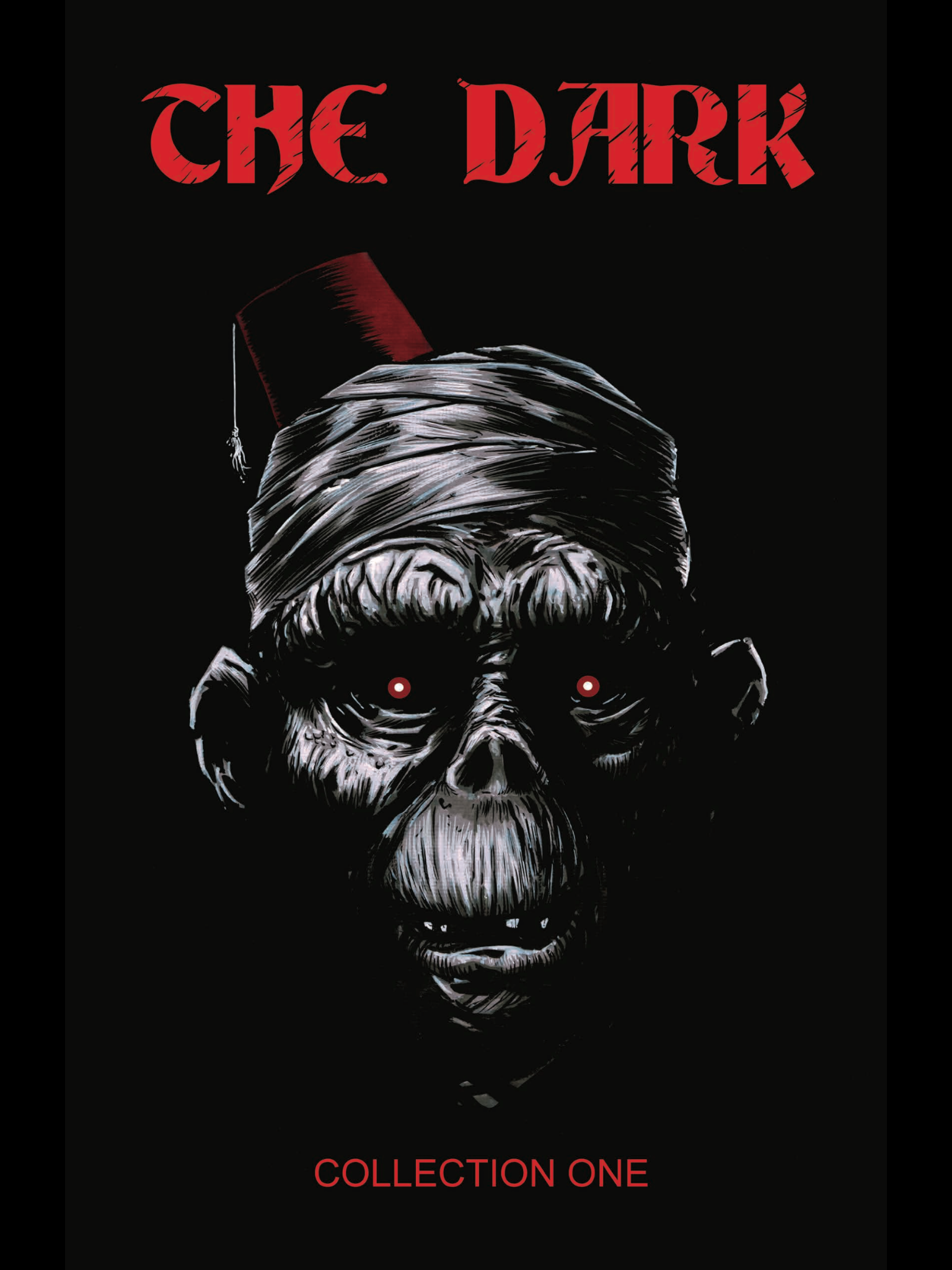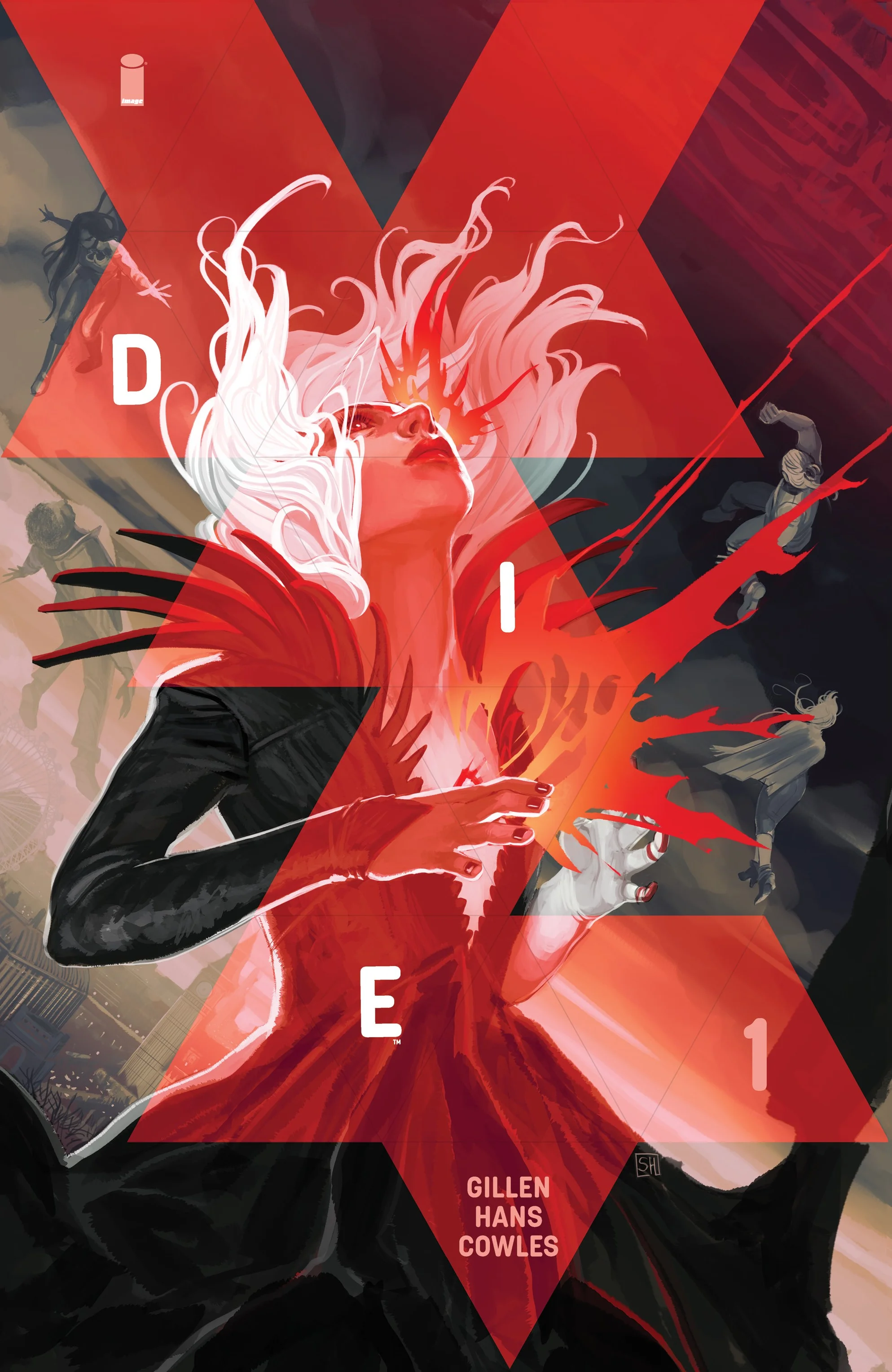The Dark Collection One // Review
Horror comics can be a very tricky beast. A lot of the tension not just relies on the storytelling, but also on the art style and the aspect for the art chosen. In a way, it’s more complicated and subjective than your average horror movie because it becomes a more intimate relationship with the reader. Luckily, a new horror compilation by Kelly Williams called The Dark: Collection One seems to have nailed a lot of it.
Kelly Williams isn’t alone either. Joining him are writers Matt Harvey and Jim Gibbons, as well as letterer Chas! Pangburn.Together, it makes this incredibly fun little Voltron of horror, and the book is well worth reading.
The collection is hosted by Monty, an undead creature who is very reminiscent of the old Cryptkeeper character. The main difference here is that Monty has a better sense of humor, and a superior stage presence. There is always some weird off joke at the end that seems to tie in with the major twist of the story, but isn’t so obvious that it comes off as a well-done brick joke instead of a spoiler.
The four tales that follow focus on the possibility of supernatural forces. The Boo Witch lives deep in the woods, with rumors that tie in with Bigfoot and a supernatural being that steals the skins of the living. Howl focuses on the old Irish legend of the Banshee, and the regrets one might have in their life. Devil’s Gate is shockingly more pedestrian of a ghost story, a tale of a summer camp romance gone horribly wrong. The final tale, Nanny, decides to focus on the private life of a child’s nanny. If you can call it life.
The art is fantastic, and is the first thing that pops in the book. Characters are immediately identifiable, even if the era the story takes place in isn’t. Backgrounds are just as detailed as the foreground, and everything is frighteningly moody in a perfect way. The monsters are wonderful, but are often hidden in the dark to leave the true horror to the imagination. Most horror is subjective, but Williams has nailed the idea of leaving it to the reader’s imagination.
There is a wonderfully dark palate for each story, aiming for a dull grey and blue tone each time. It makes the book’s real world seem mundane and lulls the reader into a sense of safety. Blood, should Williams choose to include it, is a bright splash of red across the page that shocks and unnerves. The only character to use a color off the blue and grey palate is actually Monty itself, and it also uses red in good ways. Colors are used to great effect in the comic, and worthy of any praise the book gets.
The writing is also solid, being used as a vehicle for the horror. None of the writing is particularly weak, but it does pale in comparison to the art. However, characters are quickly established and you genuinely begin to care for a few before their ultimate fate. This is something horror movie writers need to take notes on, since a lot of modern horror movies really just treat the cast like fodder rather than characters. The only real mark against the book is actually Williams’ lettering for the first two tales. Rather than smooth lettering found in the latter half of the book, and in modern comics, the first tales have this rough handwritten lettering that adds to the indie feel of the book, but can also be hard to read for the initial read through. Williams himself admits this in the opening of the book, so the reader is forewarned. While it actually fits for Howl, the Boo Hag tale almost required a re-read to fully understand what happened for a few pages. This is not a deal breaker however, because the story’s twist genuinely catches the reader off guard the first time instead.
Halloween is a great time for horror fans, and publishers will often try to put out something “scary” each year. It’s rare to get something truly unsettling, especially in a comic format. Willaims and his co-conspirators nailed it, and this is something that belongs in every horror fan’s library.








